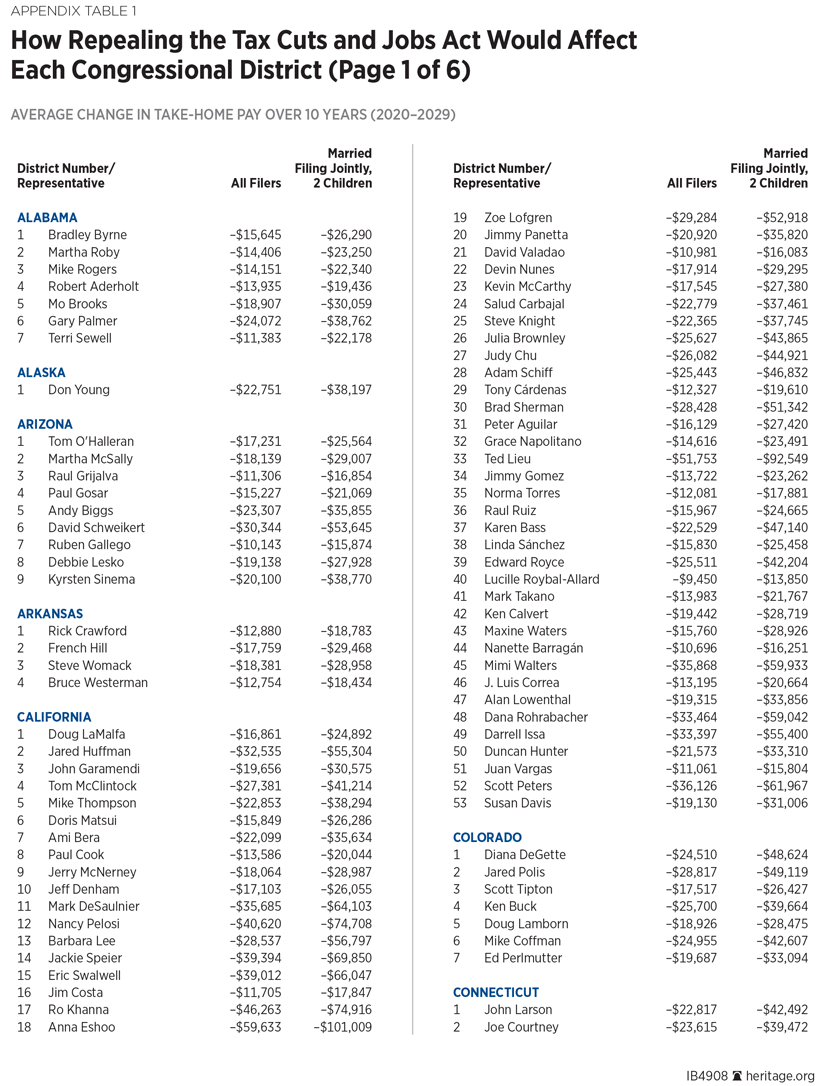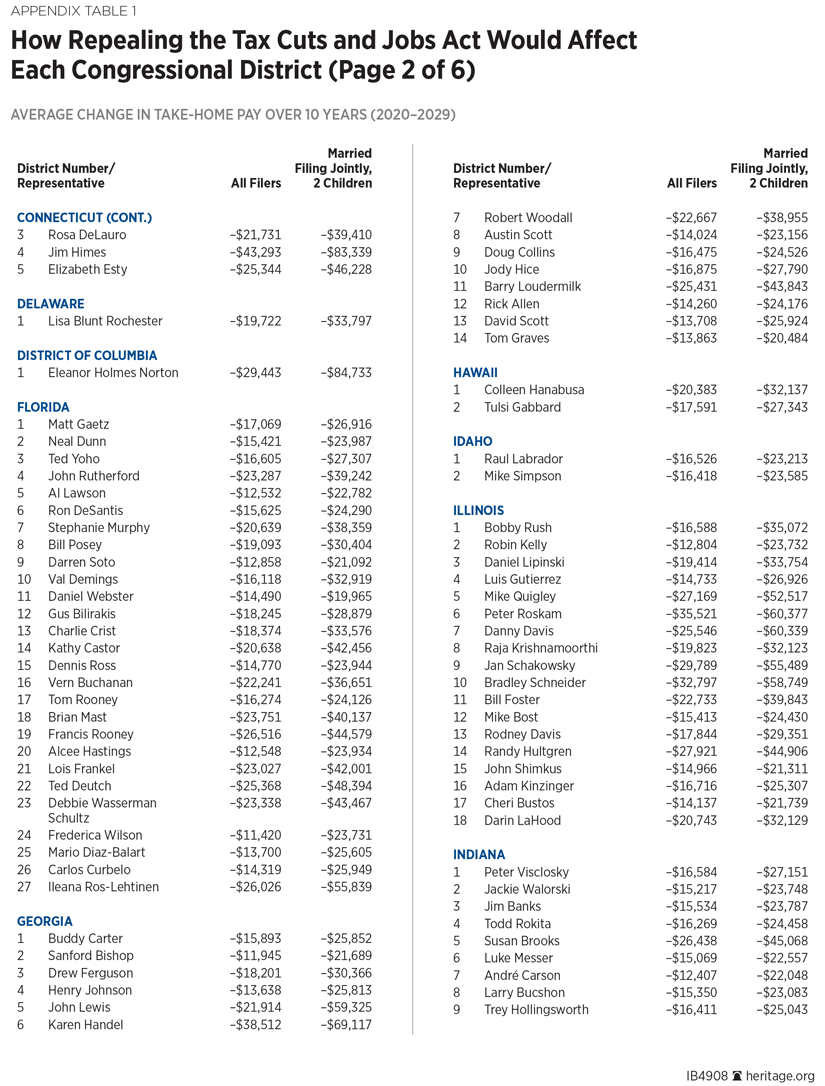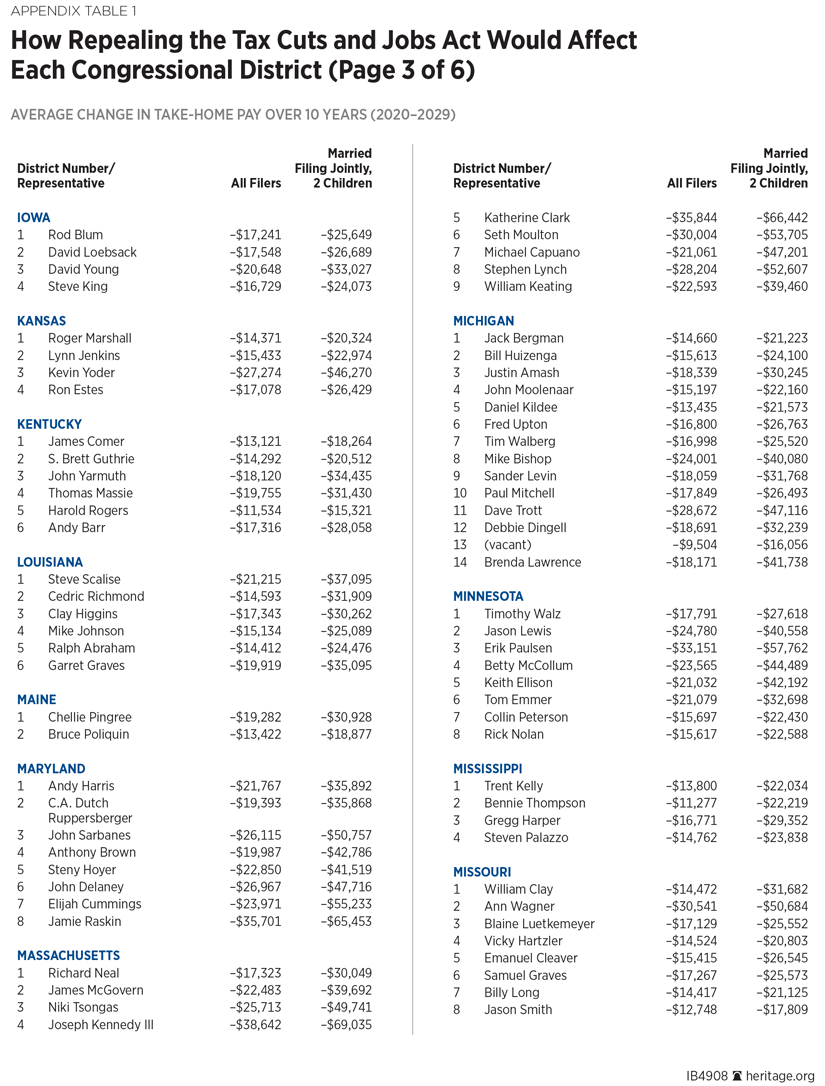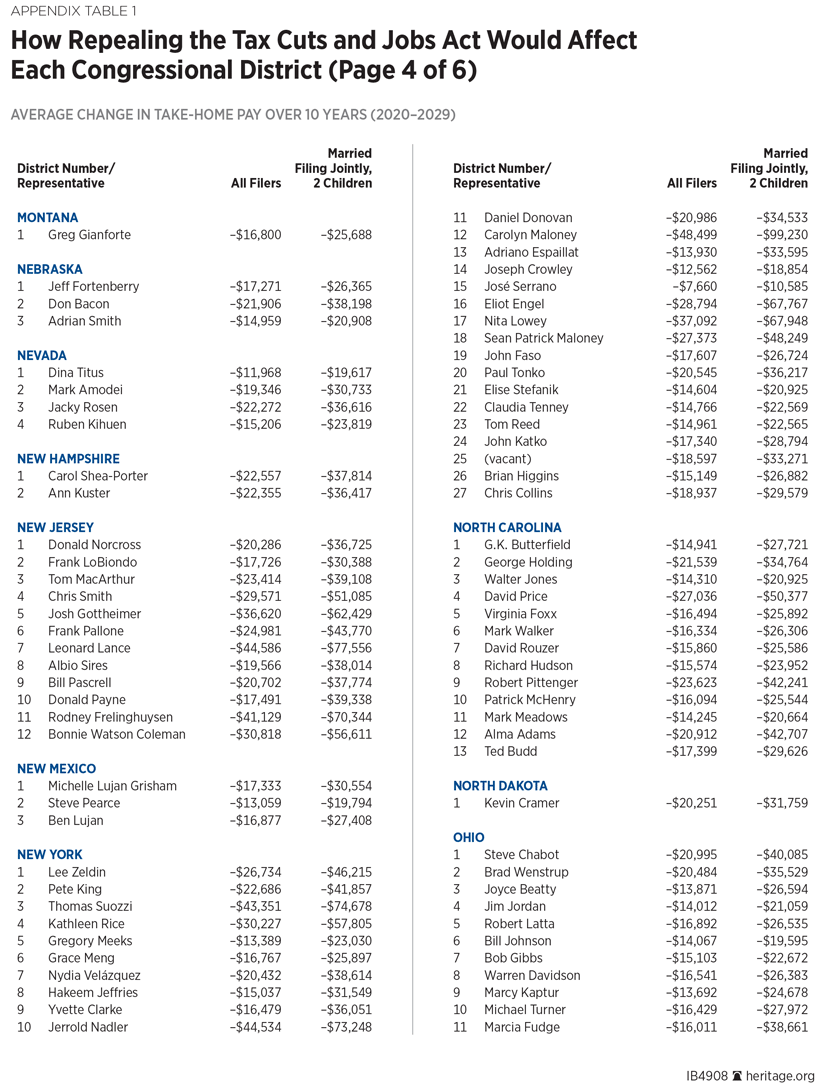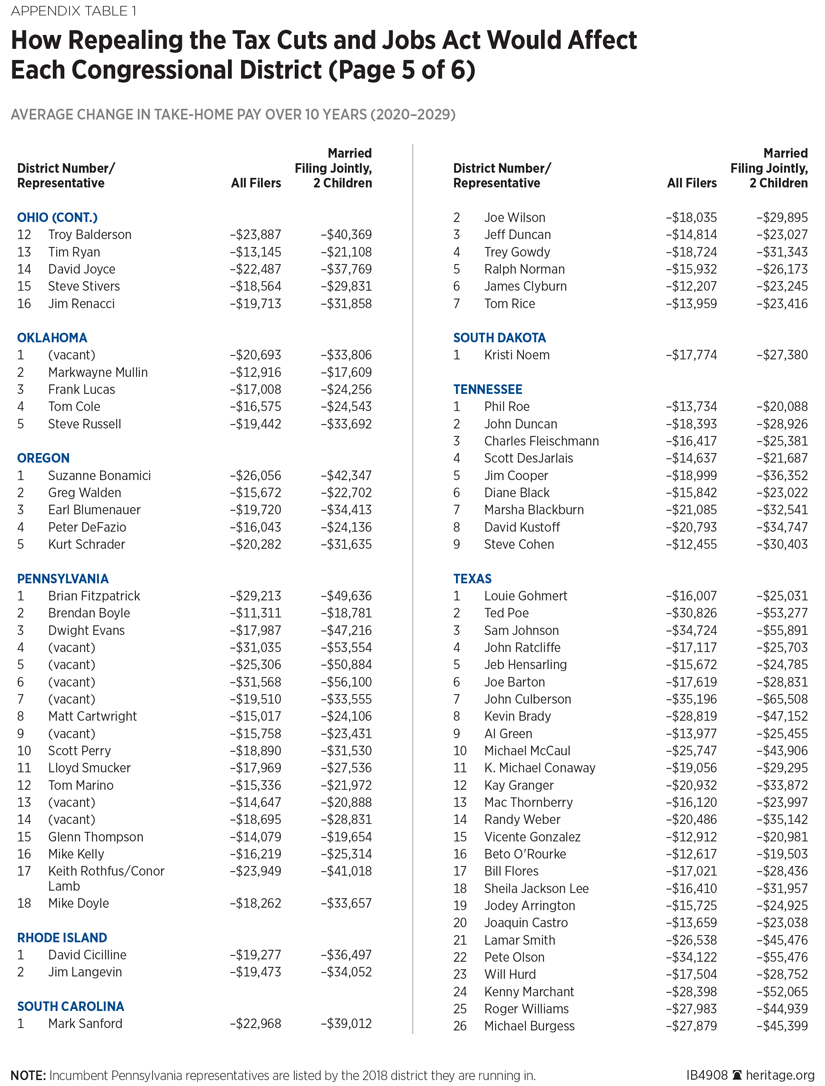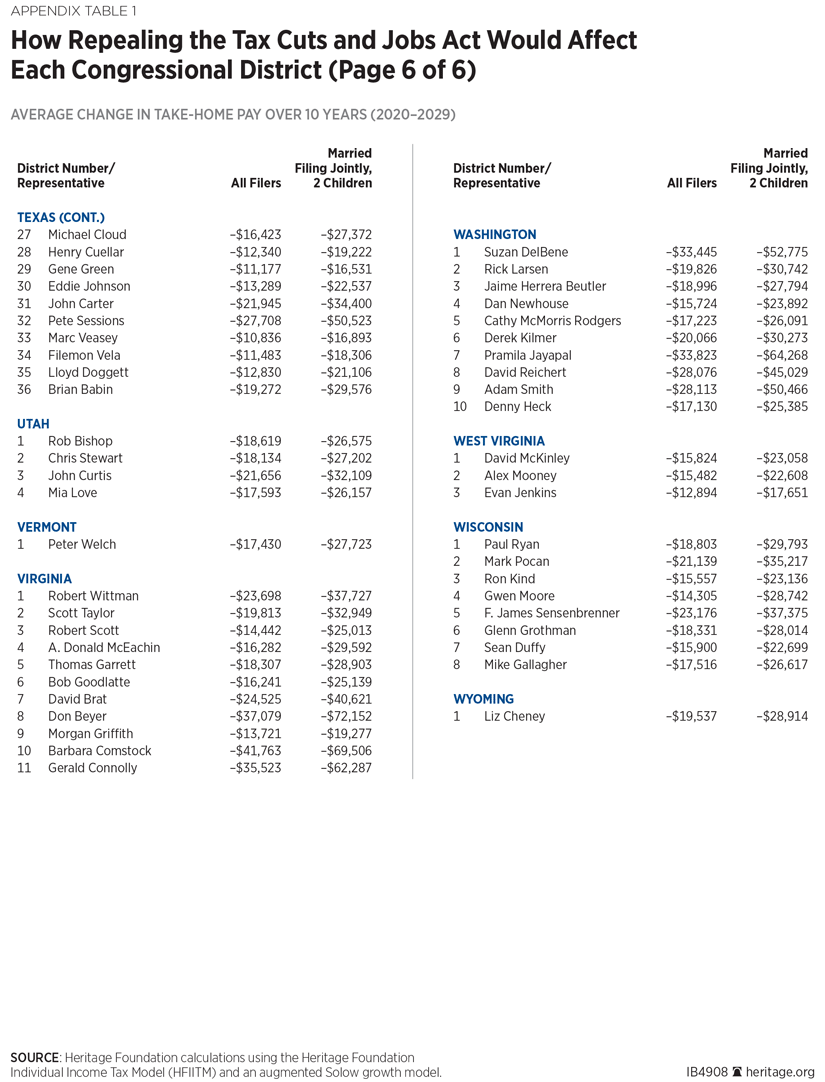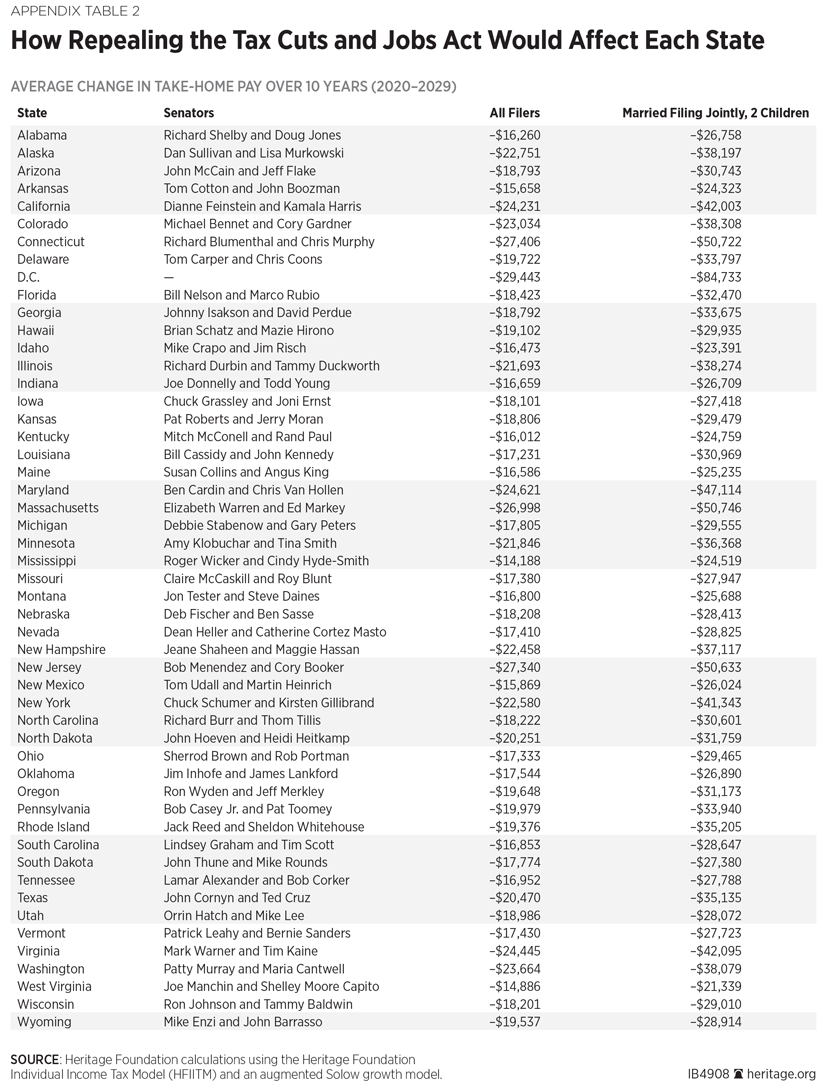Since President Donald Trump signed the Tax Cuts and Jobs Act (TCJA) into law, his opponents have threatened to repeal all or part of the law.REF
Despite his opponents’ frequent mischaracterizations of the law as only aiding the wealthy, Americans of all income levels can check their paystubs to see that their employers are withholding less in taxes.REF Businesses are investing and expanding in the U.S. as a result of the more globally competitive tax system.REF These immediate effects are only the beginning of the economic benefits that Americans can expect from the tax cuts. As long as the tax cuts remain in place, they are expected to continue to boost investment, wages, and employment.
To illustrate the lost wealth that average Americans would experience should the tax cuts be overturned, we modeled the economic effect of repealing the TCJA, effective in 2020. If taxes resumed their old structure and rates in 2020, the average American would be $26,906 poorer over the following 10 years. The average family of four can expect its take-home pay to fall by $45,739. Average taxpayers in every congressional district would have lower incomes and fewer employment opportunities.
Method for Estimating Changes in Take-Home Pay
The TCJA reduced federal income tax rates, increased the standard deduction, doubled the child tax credit, repealed the personal and dependent exemptions, created a new business deduction, and capped the deduction for state and local taxes. Those changes to the personal income tax code remain in effect through 2025. The law also made significant business tax reforms, including permanently lowering the corporate income tax rate from 35 percent to 21 percent.REF For this exercise, we assume that the entire TCJA is repealed during the next Congress, and that repeal would go into effect—meaning that taxes would go back up—in 2020.
We quantify the effects of the repeal through two main channels. The first accounts for the fact that when tax rates go up, households have higher tax bills and less money to spend or save for a given level of income. The second accounts for the fact that higher tax rates change the incentives that households face when deciding whether to spend or save. Higher tax rates reduce the benefit from saving, so households spend more, which reduces the amount of savings available to finance business investment.
We use the Heritage Foundation Individual Income Tax Model (HFIITM) to estimate the effects of repealing these provisions on average household tax liabilities between 2020 and 2029. The HFIITM applies the provisions of the tax code to a representative sample of tax returns available in the IRS’ 2007 Public Use File.
We use a variation of a standard economic growth modelREF to estimate the overall economic impact of the law on filers over the subsequent 10 years (2020 to 2029). The model accounts for the law’s effects on private saving, foreign capital inflows, government deficits, investment in new capital, interest rates, wages, and hours worked. Income growth rates from the economic model are used to scale the incomes used in the HFIITM.
This analysis builds on our previously published work. Methodologies for the HFIITM and the economic growth model are detailed in the appendix of our July 2018 Backgrounder.REF
We report national, state, and congressional district results for individual filers and for married couples filing jointly with two children.
Lower Incomes in Every Congressional District
Repealing the TCJA would raise taxes on the average taxpayer in every state and congressional district. Incorporating the forgone economic benefits of the tax cuts over the following 10 years produces a more comprehensive picture of how repealing the law will harm Americans’ incomes.
The average filer’s lost take-home pay over the course of 10 years is quite substantial, ranging from $7,660 in New York’s 15th congressional district to $59,633 in California’s 18th congressional district. For married couples with two children, these values are even higher, ranging from $10,585 to $101,009 in these two districts. Map 1 and Appendix Table 1 show the changes in take-home pay as a result of repealing the TCJA on a district-by-district basis.
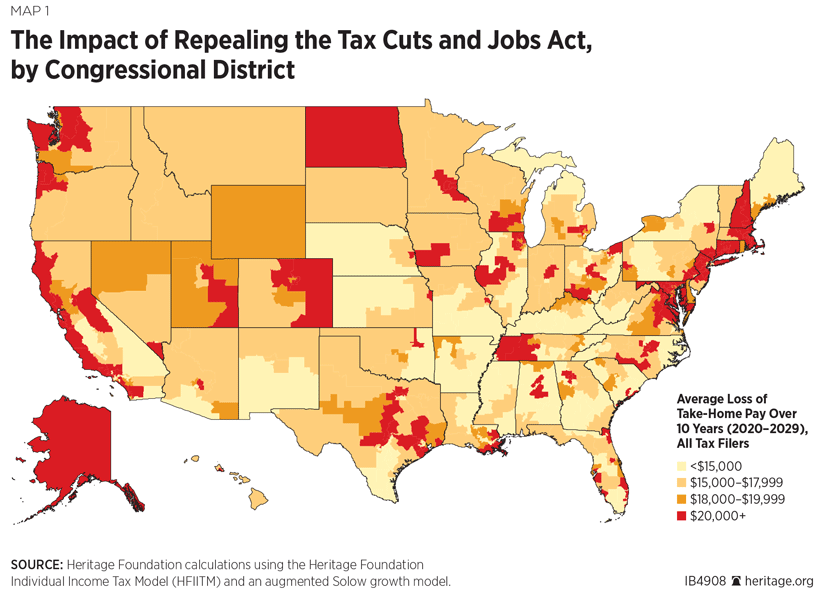
Looking at the estimates for states, lost take-home pay over 10 years for the average filer varies from $14,188 for the state of Mississippi up to $29,443 for the average filer in the District of Columbia. The lost after-tax income for married couples with two children is even larger. The foregone income over 10 years for a family of four ranges from $21,339 in West Virginia to $84,788 in the District of Columbia. Map 2 and Appendix Table 2 show the changes in take-home pay as a result of repealing the TCJA on a state-by-state basis.
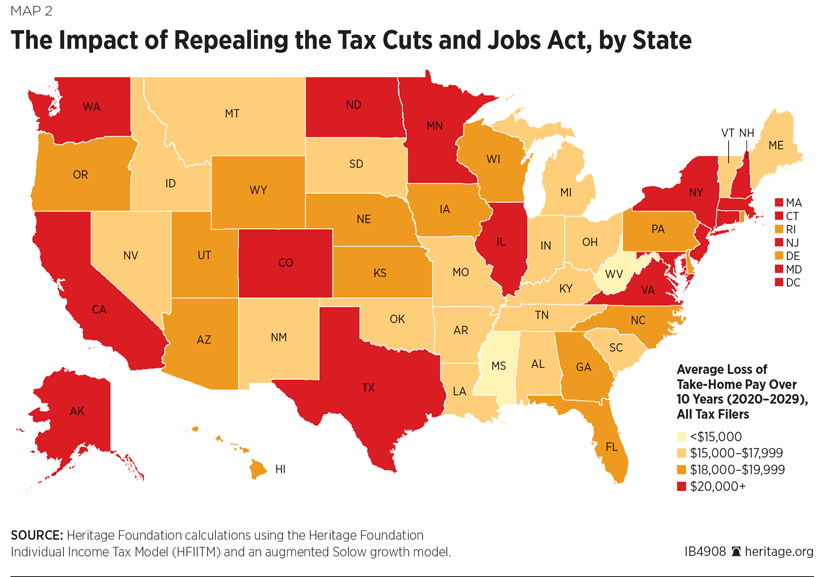
Conclusion
Americans should understand the economic stakes of fiscal policy decisions. If Congress were to repeal the TCJA or let it expire, the typical American family could lose income that could have been used toward the down payment on a home, daycare expenses, or college tuition. Moreover, repeal of the TCJA would lower after-tax incomes and limit economic opportunities for Americans across the country—not a select few.
A family’s lost take-home pay would be larger than the additional amount owed to the federal government in individual income taxes. It would also include lower wages and other lost income as a result of the smaller economy. Repeal or expiration of the TCJA, especially the business reforms and lower corporate income tax rate, will reduce the incentive for saving and investment and limit Americans’ future economic opportunity.
Some critics object to the TCJA on the grounds that it is projected to increase the federal budget deficit, which partially crowds out the increase in private investment. We agree that increases in the deficit are undesirable. However, instead of repealing the tax cuts, or rolling parts of them back, Congress should make the TCJA permanent and reduce the deficit by reducing spending to align with projected revenues. A balanced budget and lower tax rates will lead to a larger economy by both increasing the capital stock and allowing Americans to keep more of what they earn.
—Adam N. Michel is a Policy Analyst in the Grover M. Hermann Center for the Federal Budget, of the Institute for Economic Freedom, at The Heritage Foundation. Kevin Dayaratna, PhD, is Senior Statistician and Research Programmer in the Center for Data Analysis, of the Institute for Economic Freedom. Parker Sheppard, PhD, is Senior Policy Analyst for Dynamic Modeling and Simulations in the Center for Data Analysis.
